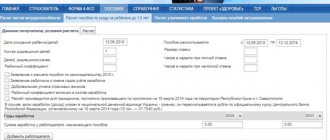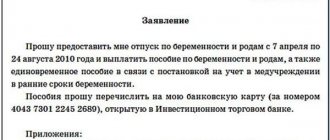Able-bodied citizens who are unable to work due to the need to constantly provide care for a disabled child can receive monthly payments from the state and their region.
Obtaining this type of government support involves several nuances, including the need to comply with a large number of conditions for registration and the provision of a fairly voluminous package of documents.
Download for viewing and printing:
Federal Law of December 15, 2001 No. 166-FZ “On State Pension Security in the Russian Federation”
Decree of the President of the Russian Federation dated February 26, 2013 No. 175 “On monthly payments to persons caring for disabled children and disabled children of group I”
Federal Law of November 24, 1995 No. 181-FZ “On social protection of disabled people in the Russian Federation”
The situation of a disabled child
Decree of the Government of the Russian Federation dated February 20, 2006 No. 95 “On the procedure and conditions for recognizing a person as disabled” regulates the algorithm for identifying and assigning status to children who:
- Dysfunction of the body has been identified;
- Socialization is difficult;
- The need for rehabilitation and social security has been expressed.
The duration of the status depends on the type and severity of the underlying disease:
- 1 year – with a high probability of cure;
- 2 years – with favorable prognosis for improvement;
- Up to eighteen years of age - with irreversible dysfunctions or the impossibility of remission.
Taking into account the directives of the Order of the Ministry of Labor of Russia dated December 17, 2015 No. 1024n “On classifications and criteria used in the implementation of medical and social examination of citizens by federal state institutions of medical and social examination”, upon reaching the age of majority, disabled children undergo a re-examination, based on the results of which they are assigned the following statuses:
- Group 3 disabled – if the dysfunction does not exceed 60% and practically does not interfere with socialization;
- Childhood disability of group 2 – if the dysfunction reaches 80% and complicates socialization;
- Childhood disability of 1st group - with complete dysfunction, making socialization impossible.







